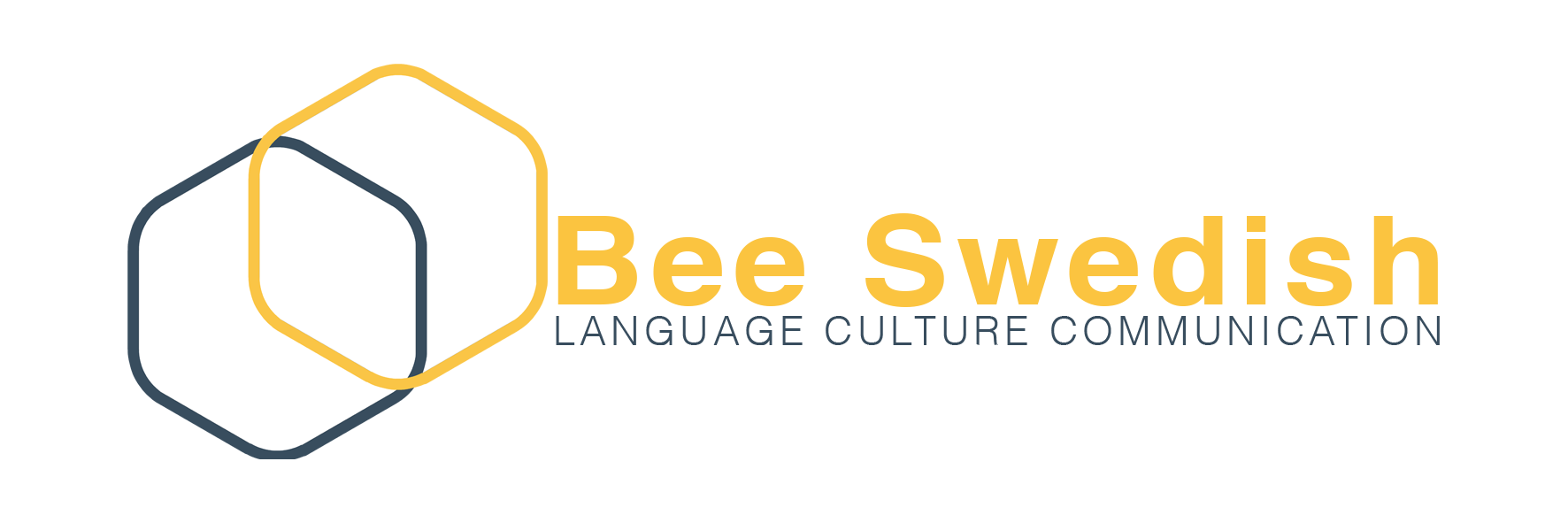Do you remember your first class in Swedish? You probably learnt how to introduce yourself, talk about where you come from, and ask others about the same topics. When you walked out of your class, you were probably on a bit of a high. Swedish is an easy language, you were almost fluent! The first few classes continued this way. You were just dealing with a rather simple dialect of English, spiced up with some dots and rings. Progress is smooth and fast, and you can notice a huge difference in your own skills compared to only a week ago.
Now, 100 hours in, you are no longer convinced that this will be such a piece of cake.
A little bit too comfortable in your comfort zone?
At some stage at the beginning of the B1 level (CEFR), you will master enough Swedish to get by in the situations you normally find yourself in. Whether this is chatting to your in-laws for 10 minutes, ordering in a restaurant, or understanding what sort of milk you are buying in the supermarket, you have enough of vocab, grasping of sentence structure, and an applicable logic for guesswork. This is nice. But. At the same time, there seems like there is no longer any progress.
Although you are going to språkfikas, try to speak as much as you can with your cat and yourself, there seems to no improvement. You are still unable to read a book, enjoy a film or TV programme, or truly express your opinions. You feel stupid when you talk about something you are good at.
Your teacher is insisting on you learning some irrelevant vocabulary that you know for sure that you will never use, and that you do not even know the equivalent of in your own language. The same applies to grammar exercises, that seem far-fetched, petty, and not relating to any applicable use that you have in mind. You are being told you are making pronunciation errors that you are not able to distinguish, and you are starting to distrust Swedish people around you – they must be living in a false belief that they speak slowly, when in fact they speak faster than anyone else on this planet.
No longer a beginner
When you were beginning to learn Swedish, you focused on the most important things first. This is logical. Some sort of Maslow’s pyramid for communication, starting with wow to say your name, ask for a fika, to introduce your family, avoiding the filmjölk in your coffee. Every word and grammatical exercise expanded your opportunity to say things you had in mind. Each class took you 50%, 33%, 25%, 16%, 10%, 2% further. Now, a set of ten classes take you nowhere.
Nor an advanced speaker
You are past the initial excitement of understanding a word here and there, but you are also frustrated you cannot yet take part in conversation the way you can in your native language. You are not able to read a whole book (not even Harry Potter translated into Swedish). Nor watch TV. You can only dream of listening to the radio. Your only access to Swedish is through other non-native speakers, or course material adapted to that group.
I call this the B1 crisis
And it is normal. And very frustrating.
The solution
First of all, you will need a structured approach to your progress. Define where you are at the moment, and where you would like to be within a certain time-frame.
What is relevant vocabulary? Define what domains you would like to feel more confident in. Would it be your professional or academic field, everyday topics, or related to an interest or hobby of some sort.
In what ways would you like to express yourself? Is it important for your to discuss ideas and opinions? To talk about topics related to your professional or academic field? To make comparisons?
Accept and embrace that you will not be able to translate from your own language anymore. You will need to think in Swedish. For this, you will need a good Swedish-only dictionary (I recommend Natur och Kulturs svenska ordbok).
What method works for what?
You will also need to distinguish between learning and practice. Joining språkfikas and similar events are great for practice, and for networking, but if you are on an intermediate level, chances that you will actually learn something substantial is minimal. The same applies for digital platforms, that are extremely good for revising existing skills, but are limited in giving you feedback on free speech. Chatting to your Swedish family, friends and colleagues may give you some confidence and a good idea of social codes, common topics, manners of speech; but they are unlikely to give you useful input if you are looking for inspiration. Swedes will also consider it impolite to correct your mistakes.
Does that mean that I will need to take courses?
Not necessarily, but you do need structure and focus. If you are self-disciplined enough and have the experience of teaching yourself, you can get really far on your own. Make sure though, that someone gives you feedback. You will not make progress if you are unaware of your mistakes.
Some good books for self-studies
- Avancera ord. This is a collection of advanced vocabulary (500 words in total) with germanic roots, often used for abstract reasoning. They are categorised in 20 chapters, and ordered according to frequency. Combine with flash cards to put your new knowledge into practice.
- Se upp! An introduction to partikelverb – phrasal verbs, the most annoying (and useful) thing you need to get your head around.
- Klara grammatik test. Of some reason, all my students love working with this book. The format is simple, you get two or three options of how to express one thing in Swedish, and you need to choose the one that is correct.
- Complement these with some text material and examples of everyday conversation. I absolutely love the Rivstart series, because it relates so well to how Swedish people actually use the language.
If you are teaching yourself, it is extremely important that you check whether your answers to the exercises are correct, and that you do follow up on your mistakes.
Courses
You can also enroll onto courses. A group course at Folkuniversitetet is an affordable option of fairly high quality. You should expect to pay SEK 100-150 per 45 minutes, or 130-200 per every 60 minutes, in a class of 8-15 students. You normally sign up for packages of 30 or 60 sessions of 45 minutes.
Private tuition
A private teacher may be the best solution, if you are ready to make the investment. For a serious provider of experienced teachers, you should expect to pay SEK 600-900 per every 45 minutes, or 800 – 1200 per every 60 minutes, this excluding VAT, dependent on teaching quality, location, and flexibility. Only a handful of lessons may be enough to get you unstuck.
A good teacher will make a ‘diagnosis’ of your needs, correct fossilised errors, help you to translate your general goals into language learning goals. Even more importantly, they will give you a good base for continuing on your own after having finished your contract, by making you aware of your learning challenges, helping you to develop sustainable studying techniques and methods for revising, recommending course literature and learning platforms.
There are many instances, small companies and big institutions, offering private tuition. Before signing any contract, ask to see the CV of the teacher in question, to make sure they have the necessary experience of teaching on intermediate and advanced levels, which requires much more than teaching beginners. Also, ask for a detailed course plan to make sure the course content is adapted according to your needs and goals.
Set your goal
The most important thing is to keep in mind that as long as you keep making progress, you will get out of your B1 crisis. The B2 experience is different, perhaps also a crisis, but at least a different one. When you reach B2, you will be able to immerse yourself in the language in a new way, meaning you will be able to learn also beyond your classroom. Improving your Swedish will be integrated in your daily life and work, and at this point, your motivation will come back. For sure.

